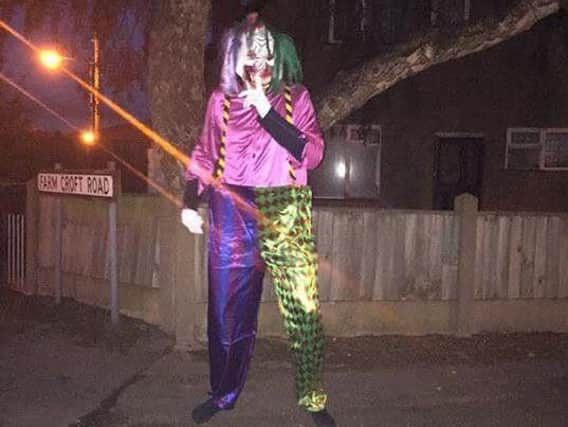College tries to explain why pranksters might be dressing up as clowns


Notts, like most of the country, has been swept up in a wave of strange behaviour as pranksters, seemingly unconnected in anyway, are taking part in a nationwide flashmob of 'killer clown apprentices.
We spoke to a local college teacher about why the interesting behaviour may be spreading ever wider, and what's behind the common phobia of clowns.
Caulrophobia: What is it?
Advertisement
Hide AdAdvertisement
Hide AdThe phobia of clowns, known as Caulrophobia, is not strictly an official phobia.
Harriet Barnes, who teachers A-Level psychology said: "It's not acknowledged by the WHO or in the Diagnostic and Statistical Manual of Mental Disorders (the index of mental issues used by psychiatrists also known as the DSM-5).
"We look at phobias in a specific section, and a lot of different psychologies explain them, such as classical condition.
"The idea is you have an initially unpleasant experience, so for instance someone jumping around the corner, then you learn to associate anything in the environment, any triggers, with that experience. So if someone costume made you feel scared or uncomfortable you would always associate that figure with the feeling of being worried, but when the danger is removed the fear of the clown is still there."
Advertisement
Hide AdAdvertisement
Hide AdAnother factor sis that clowns are anonymous and their identity is hidden, which also presents a scary figure.
She added: "The make up hides their identity which can trigger a feeling of discomfort as well, and they are often portrayed in popular culture as quite scary."
So whats motivating the 'killer clown' craze?
Ms Barnes said: "There is a theory by the French psychologist Charles-Marie Gustave Le Bon, called 'crowd theory' and there is something particular in that called the 'behaviour contagion'.
"It would usually be applied to rioting behaviour and when people get swept up in things like that.
Advertisement
Hide AdAdvertisement
Hide Ad"But recently it's also been applied to social media. When Le Bon developed the theory there was no internet, so the behaviour was in big crowds. But now with social media, behaviours spread around the world and you don't actually have to be physically close and feel in that physical atmosphere - they might see videos, and they might see things in the media, the more it is reported the more likely it is to be seen somewhere else.
"People commenting on stories and laughing along may be reinforcing them, and also with the opposite, of how shocked they are by it. The pranksters may be feeding off these reactions.
"Psychology is a fascinating subject, and I'd love to see prospective students think about studying at Vision West Notts College" added the teacher.